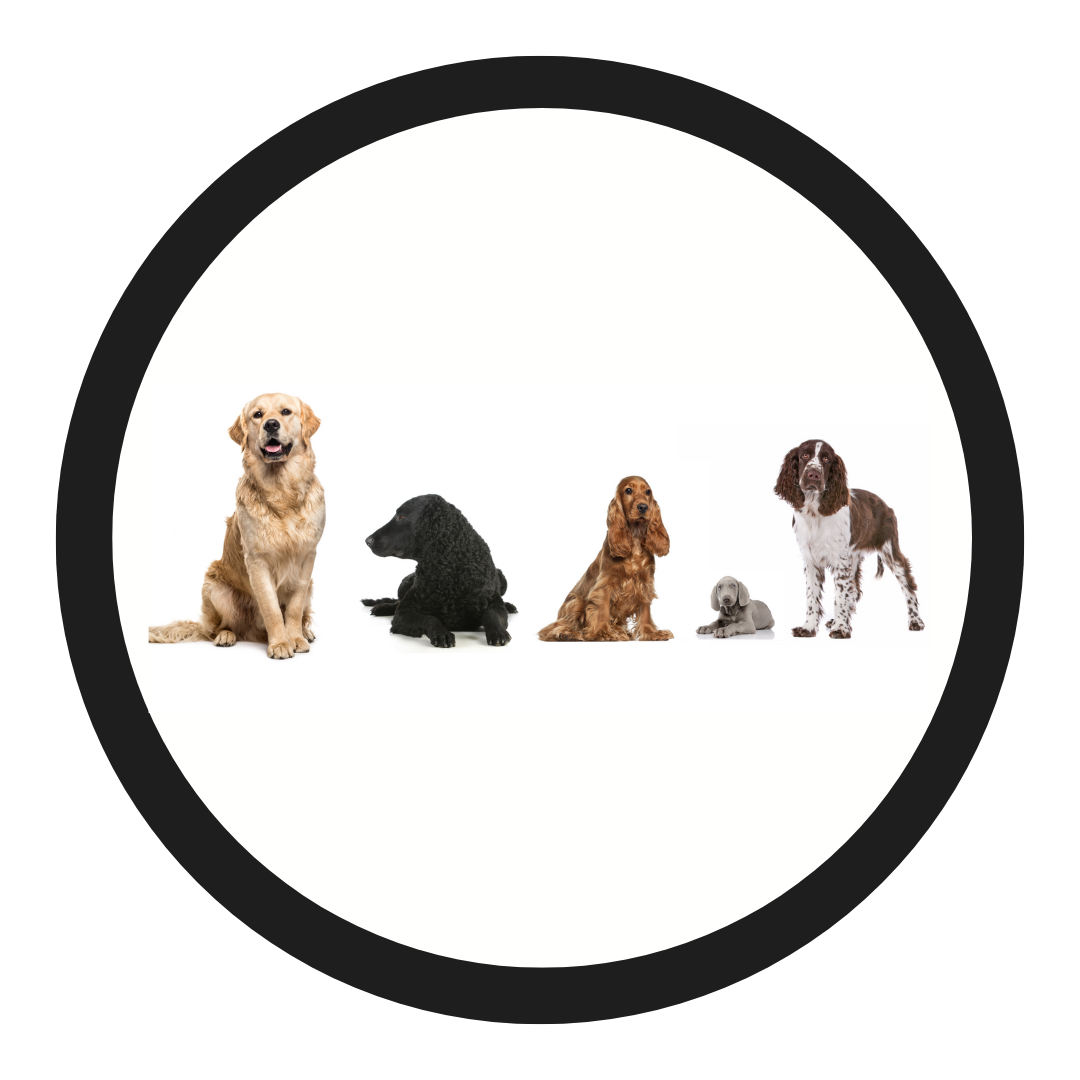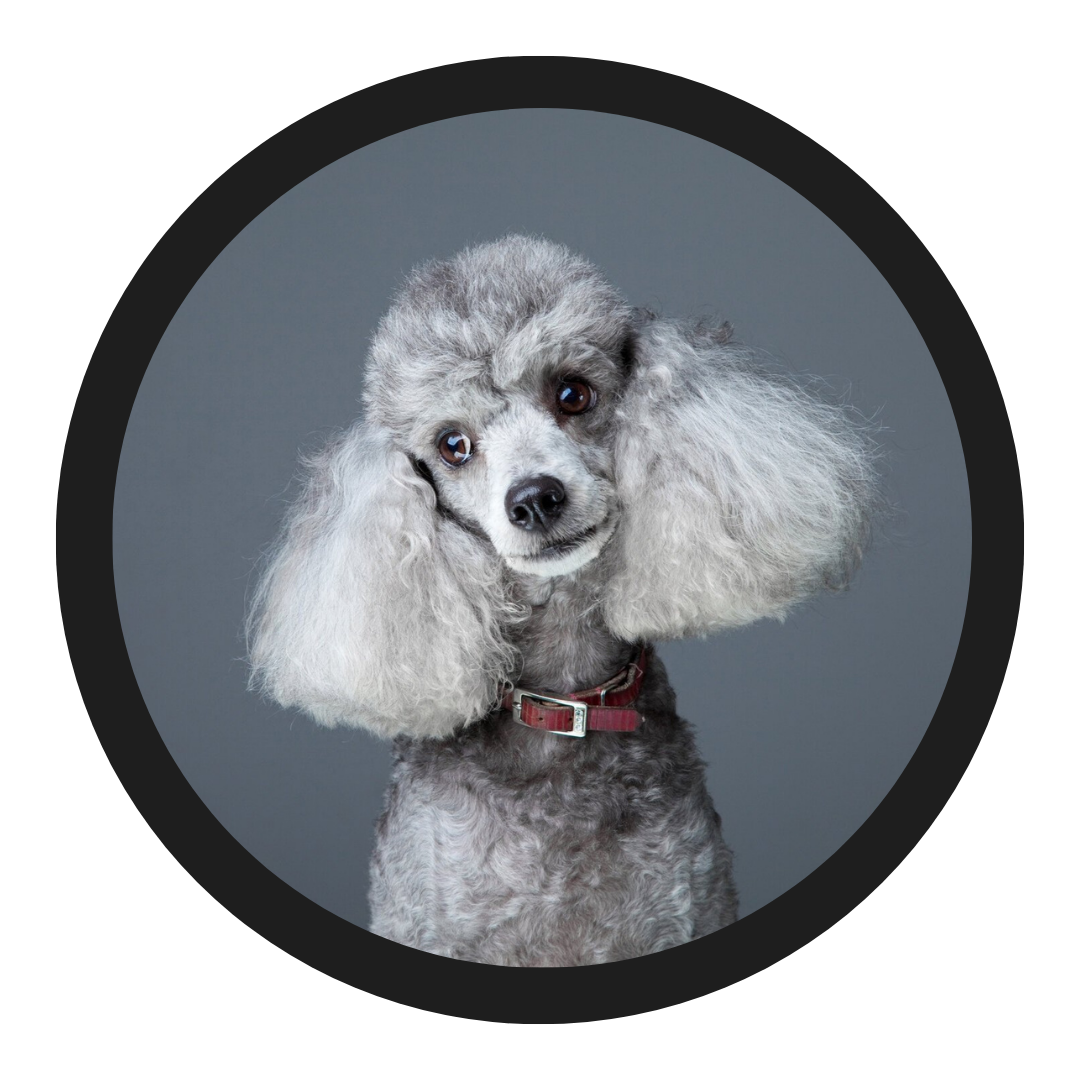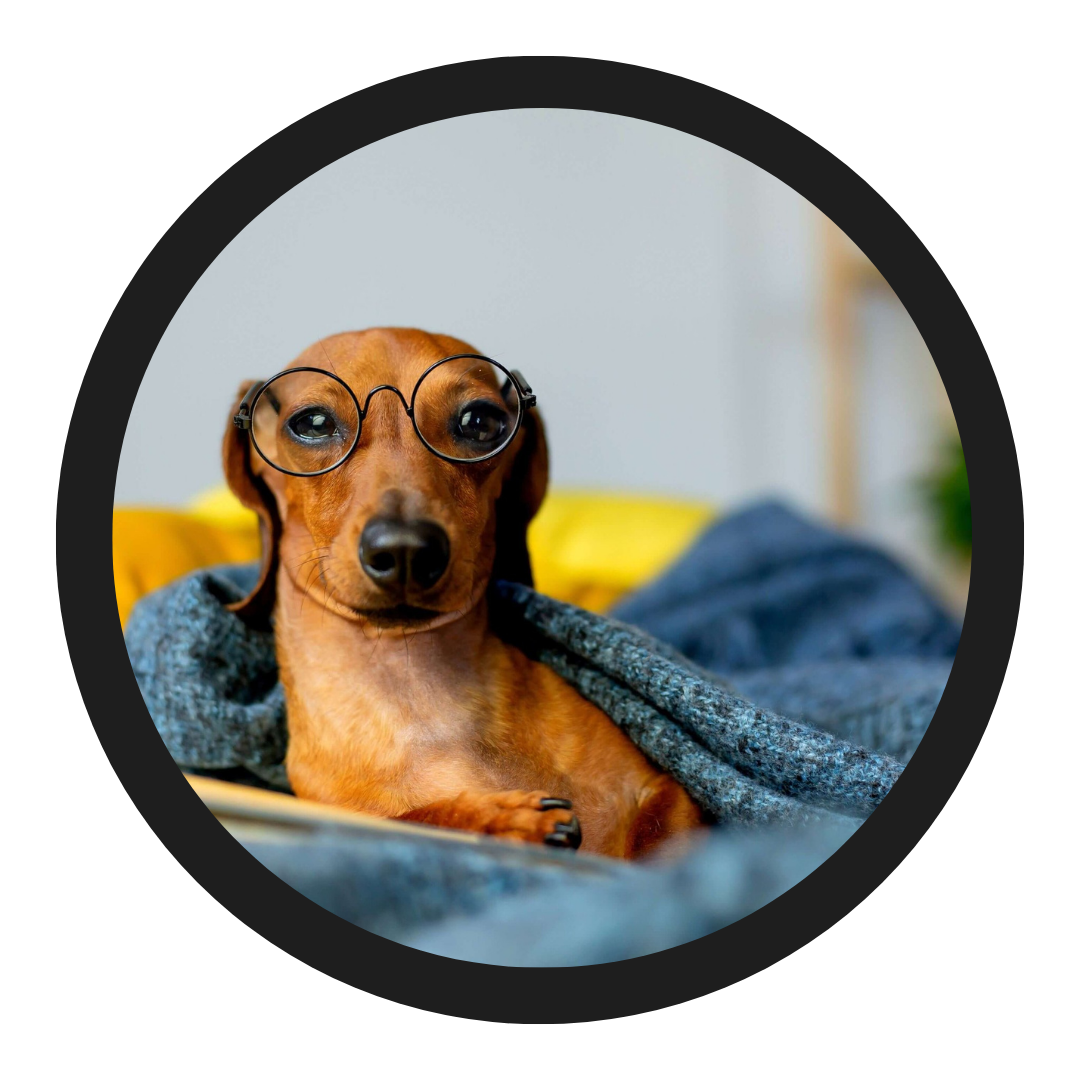ADVANCED GROOMING TUTORIALS
English Setter
Introduction
The Four Setter Breeds
The four breeds of setters are often thought of as the same body type just painted different colours. And although it is obvious they are different colours it is important to note the differences between each breed when we go to trim them and exhibit them.
The Irish Setter is the most “fired up” and racy of the setter breeds. With their deep mahogany coat you must be careful when trimming as colour change can happen easily with the wrong kind of trimming and this is to be avoided at all costs.
The English Setter is heavier in body that the Irish but not quite as heavy as the Gordon. Their white coat can be cottony or silky and such needs different attentions paid to it depending on hat coat type your setter has. Keeping the whites white is also something we will discuss here.
The Gordon is the heaviest and most robust of the setters and is also the only ”square” shaped setter. Keeping the square shape in mind is very important when trimming this breed as they are trimmed in a different style than the other breeds.
Their black coat can be more forgiving with different trimming methods but you must also take care to make sure their coat doesn’t get sun-burnt and turn a reddish brown.
The Irish Red and White setter is a bit shorter and stockier than their cousin the Irish setter. With Red patches on a pearly white background their unique colour patterning gives yet another dimension to trimming.
Although techniques can be used here on all four breeds of setters this course will focus on the English setter.
Introduction to the English Setter
Equipment used:
Clippers-Wahl Bravara clipper with the fine adjustable 5 in 1 blade
#10 blade or adjustable blade
Course stripping knife-Chris Christensen Pro Knife
Medium stripping knife- Chris Christensen Pro Knife
Bristle brush- Chris Christensen Ionic series oval
Stripping stone.
Thinning shears- Chris Christensen Adalynn Rose series 7 inch thinner
Steel comb- Chris Christensen 7 inch fine/coarse comb
Short straight shear (for feet)- Chris Christensen Adalynn Rose series 5 inch
Slicker brush- Chris Christensen Big G in medium
Pin brush-Chris Christensen Fusion series oval 27mm pin
The Breed Standards
It is very important that you read and have a clear interpretation of the breed standard and keep this in your head as you are trimming and handling your setter.
Please click here for the American Kennel Club Breed Standard for the English Setter: https://www.akc.org/dog-breeds/english-setter/
Please click here for the American Kennel Club Breed Standard for the Gordon Setter: https://www.akc.org/dog-breeds/gordon-setter/
Please click here for the American Kennel Club Breed Standard for the Irish Setter: https://www.akc.org/dog-breeds/irish-setter/
Please click here for the American Kennel Club Breed Standard for the Irish Red and White Setter: https://www.akc.org/dog-breeds/irish-red-and-white-setter/
Getting started-clipper work
Starting the trimming of the setter it is always best to start with your clipper work as then you have a starting point for all the other trimming methods to come from.
Starting with a #10 Blade.
Starting with the ear from the top of the ear you clipper down going with the grain of the hair start cleaning the ear hair off. You will clipper down the length of the ear between one third and one half of the total length of the ear. The amount of hair you trim off will depend on how long the ear leather is as well as how much ear feathering the dog has. Use your interpretation of the standard to determine this. You NEVER want to go into the skull as you with use a stripping knife and thinning shears in this area later to get the desired effect. Do not clipper off the front fringe of the ear feathers. Many people make this mistake as they are trying to make the dog’s ears appear longer. It is important to remember that with all the setter breeds we want the fringe at the front of the ear left on to help frame the head. Flip the ear over and clipper out the hair on the inside of the ear. Keeping the inside of the ear leather free of hair actually helps keep the ear more hygienic. When clipping the inside of the ear, with the ear leather flipped back you will notice a line of hair, this is actually ac cowlick and I start my clipper work at the line and clipper straight back to the inside of the ear. Once both ears are done you can move onto the throat.
Clipping the lips
Next you want to clean out the lips of your setter. Setters have deep lips and it is important to pull back the lips at the corners of the mouth and make sure the little grooves along the bottom lip line are nice and clean. This may take a couple passes of the clippers. When clipping the top lips you are still using a #10 blade but you don’t want to dig right into the coat. You are just grazing the hair in this area to take the whiskers off. You are also going down and around the outside of the lip or “flew” to make this area look neat and clean and tidy. This technique can be a bit tricky and your dog’s reaction can affect the outcome. Remember practice makes perfect.
Once you have ensured that both sides match you are done the basic clipper-work for the neck and throat.
Clipping out the inside of the feet/pads
Using the #10 blade you want to clip out the insides of the pads of your setter’s feet. Clean all the hair out in a scooping motion and then trace along the edges of all the pads with a corner of the clipper blade. If your setter has too much hair on the bottoms of there feet they can walk on that hair and more easily slip in the show ring. As well a build up of hair and subsequent mats can cause your setter’s feet to splay.
The back feet are clipped out in the same manner as the front feet. Be sure to clean out all four feet with care.
Starting on the Jacket/Topcoat
The jacket is all the hair on the top of your setter. The hair that does not drop down and form “feathering”. The Jacket is referred to as “topcoat”.
Once the clipper work is done it is time to start on the jacket. Using a bristle brush brush all the topcoat in the direction that is grows. You will brush quite firmly getting the hair to start going in the direction you want. Then using your coarse knife pull the skin at the top/side of the neck neat the skull taught and start to “card” or strip out the undercoat in this area. You are using a ‘raking motion” and you want to always pull the skin taught so that you do not risk catching your dogs skin as this is uncomfortable for the dog. As you finish with the neck you keep working down your setter’s body all the way to the tail. Too many people forget to strip out the top of the tail and this is a mistake. Remember when working towards the tail to be aware of your dog’s tail set. Some setters need a little build up of hair in this area. This is where you use your interpretation of how your dog fits the breed standard.
Using the stone
Once you have raked out all of the undercoat out of your setter you are ready to start using the stripping stone. With the stone we are not raking the coat again. Use a corner of the stone and your thumb and start stripping off some of the topcoat pieces that are sticking up and making the coat look unkempt. The goal here is to make the topcoat look neat and tidy and like it is tight fitting to the jacket of your dog.
Thinning Shear work
Now using your thinning shears go the side of the neck of your setter. Holding the head up start at the bottom of the “new Line” you clippered and take off the overlap of hair with the thinning shears. Pointing the thinning shears straight up you take off all the hair creating a nice neat line. You can see no why we start with the clipper work so that we have a place from which to start and finish our lines.
It will take several passes of the thinning shears to make sure that this is completely and properly done.
Shortening the hair with thinning shears.
Now it is time to de-bulk and neaten up some of the excess coat with thinning shears. We call this “modified scissoring”. Years ago most people and today there are still some that when they scissor they go up and under the coat to de-bulk the coat. This is not effective and often causes some long term problems with this cut hair starts to re grow. The way we do this now is we shorten the hair. We use the comb as a guide and hold the hair up as we follow along at the top edge of the comb and shorten the hair with the thinning shears here. This method does take practice and coordination but it is well worth learning the skill once you see the finished result.
The first line where we use this method we are following the line of the neck and shoulder. Remember to comb and brush between passes of the thinning shear to make sure you are not making any holes and to watch the progression of your work. It is important that your setter remain standing during this part of the trimming as the lines will totally change if your setter in sitting.
Defining Neck and front Leg
Using the medium stripping knife go over the sides of the neck pulling off all the excess untidy hair. You will alternate between the stripping knife and the stripping stone. Different coat types will dictate which of the tools will work the best.
Once you have the front of the shoulder and the sides of the neck looking the way you want lift up the front leg and continue pulling hair of the top of the front of the leg to make the leg look more set-under the body when you are finished. Too much hair here will not only look untidy but it can make your setter look like their front legs are set too far forward. (note your setter can sit while you are trimming the front of the front leg). Continue down the length of the front leg pulling off stray hairs to make the entire leg look neat and tidy. When you take the excess long hairs off the front of the leg it is easier to build up the leg hair at a show.
At this point when your setter is standing up you can see how this trimming technique makes your setter’s front leg look well set under. As well you can better see the shoulder lay-back and the return of the upper arm. Go over the trimmed area with the brush and the comb to check for excess hair that may need to be removed.
**Pro Tip** When drying your setter, especially the front leg and shoulder dry all the hair back towards the tail of your dog so make this look easier to achieve. As well you are starting to train the hair to go in the direction that is most appealing for the show ring.
Defining the Rear of your Setter
Moving to the rear of your setter switch to the medium knife and gently go over the rear again tidying up any loose hairs that look untidy.
Defining under the tail is a tricky place to trim for both setter and groomer. Your setter is going to want to sit while this is being groomed and you are going to have to have patience.
Holding the tail straight up use your thinning shears to clean up all the hair around the anus. It is very important to be careful and to make this area look neat and tidy.
Next using the line from where the longer feathering on the pants start, up and towards the top of the back, clean out the bulk of this hair using the comb and thinning shear method.
You will notice as you start bulking out this coat you will have to go back to the line under the tail and keep tidying this area up.
Defining the Thigh
Follow along from the line of the pants into the thigh and use the comb/thinning shear method to bulk out this hair. Be sure to comb and brush between passes of the thinning shears so you can see how much more hair needs to come out. When trimming your setter the more often they can stand four square and in a straight line the easier it will be for you to trim and to also get the look you are looking for.
Once you have bulked out the hair go over the area again with the medium knife and the stripping stone pulling the hair in the direction you want it to grow.
The feathering should always look like an extension of the bone structure. If we go by this guideline then it is very important that we can see the bone structure. That is why when we are trimming we start with the clipper work and stripping/raking. It is to see the bone structure.
Finishing the Topcoat/Jacket
Once the front end, the rear end and under the tail are defined on your setter and you have also roughed in the topcoat, it is now time to finish and define the topcoat.
Using the medium stripping knife you will again card/rake the topcoat from the neck to the tail-set being careful to leave hair in front of the tail/tail-set. Once this area has been raked you now use your knife and your thumb to pull off some of the guard hairs. We call this “topping” off the topcoat. You are taking off the loose hairs making the topcoat look fitted to the dog. You may have to switch from knife to stripping stone as texture dictates. If you get to a wave in the coat you will pull the coat out of the wave in the opposite way the hair is waving, but still keeping in mind you are pulling in generally in the direction that you want to hair to grow.
Do not pull too much hair before you stop and brush/comb to see how much hair you have pulled. Also be careful to not pull too much hair in any one area and create a hole.
The Leash Line and Top of the Head
The Leash Line
Using a medium stripping knife strip off the back of the skull where it meets the neck in the direction you want to hair to go (down) This is where the leash will sit. By stripping the hair here when you are showing your dog there will be a nice clean line when your dog is viewed by the judge from the side.
Use the occiput as your guide. For the leash line pull from below the occiput down. For the top of the head pull from just before the brow bone towards the occiput.
Top of the head
It is important before trimming your dog to be aware of the standard. The setter standard calls for level planes on your setter’s head so be sure you are trimming those planes in. When you run out of textured hair that your knife can pick up switch to the stripping stone, as well when the stone seems to be picking up hair less easily simply rotate the stone to a fresh area that better picks up the hair.
Front of the Face
You use the stone and your thumb to strip the excess hair off the top and sides of your setter’s head and cheeks. You can also use a light, slightly raking motion to strip out some of “fuzzy” hairs on the front of your setter’s face just below the bridge of the nose.
Front Feet
To start the trimming of the front feet it is ok for your setter to be sitting.
Using a short straight pair of shears, follow along the line of the bottom of the foot and up to the thumb pad (the large pad at the back of the foot) so that your setter has a place to put their foot down. As you com around the front of the toe you will cut into/over the top of the nail. At this point make a note of the length of your setter’s nails and trim shorter later if necessary. Trim the hair off of all of the pad lines. Give a shape to the entire foot. When you do this you will see a bit of the toe nail. Splay the toes apart slightly using the fingers of the hand holding the foot and get the hair out from between the toes.
Now you are ready to work with the thinning shears. Hold the foot up and slicker the hair up from the foot towards the top of the leg. Pointing the thinning shears up the leg start from the outside pad line and thin the hair out across the top off the foot going all the way across the foot from one side to the other giving the foot definition and shape.
Once the foot looks neat and tidy you are now ready to finish the foot trimming. Put the foot down onto the table and using the tips of your thinning shears take off all of hairs that do not fit into the outline of the foot.
You will go around the foot several times perfecting the look. Be very aware of how your dog is standing on the foot and if he is altering the look of the foot. Adjust your dog’s stance as needed.
Back Feet
Trimming the back feet is a little more difficult than the front feet just based on basic anatomy.
You have already prepared the underside of the foot with the clippers earlier. With the foot on the table you will use the short straight shear to make the round outline of the foot. With the foot still on the table you will brush the hair up and go around the foot several times with the thinning shear to get the desired look. The back feet are never as noticeable as the front feet so while perfection here is the goal it is not as imperative as with the front feet.
The Hocks
You want the hock to both look low and not “long hocked." As well, you want the hock hair to help with the overall look of your setter’s angulation. Start with the back foot at the back of the table. You are using the thinning shears and NOT straight scissors. Brush all the hock hair out with your slicker brush. Get on your knees so you are at eye level with the hock and can better see the lines you are creating. Be sure to trim all the way around the hock trimming both the inside and the outside of the hock. You are trimming a basically straight line from the back of the thumb pad to where you want the hock to appear nice and short. This is your interpretation of the breed standard. Once the hock is trimmed you must remember that once you use chalk and cholesterol at the dog show touch ups may be needed.
The Underline
Remember when trimming the underline that you are trimming the feathering. We want the feathering to always look like an extension of the bone structure or even better what you want the bone structure to look like.
For trimming the underline often a longer pair of thinning shears will help you to get to the desired area a little easier. The longer shear allows for a longer line with each cut and often that means there is less chance for a “choppy” look. The length of thinning shear you decide on is of course personal preference.
Starting from the rear of the setter you will trim in the knee area. Using your thinning shears decide where the extension of the knee would be OR where it would look as close to perfection as possible and carefully cut the knee section in a line that continues down to the hock.
Make sure you are continually combing the feathering between passes of the thinning shear for a more defined and cleaner look.
The Tuck Up
Now cut from the knee area up into the “tuck up”. When trimming into the tuck up you are looking to make your setter look balanced. The tuck up should land where your setter’s waist is or where you want it to look like it is. It is very important to have a clear idea of where you want the tuck up to land before you start into this area.
Trimming the Underline
You will now start a line from the elbow that is a straight line up into the tuck up that you have already trimmed. When starting this line you will have to life the front leg so that the underline actually starts from underneath your dog. You are aiming to make your setter look atomically perfect. Make sure that your lines are straight and not round. There are no round lines on a setter. You will have to make several passes under your setter to make sure the underline looks neat, tidy and straight.
The underline MUST connect with the bib in a continuous line that goes under the front leg. If the bib is broken or damaged you may have to shorten your ideal underline to make this area look balanced. If the bib is undamaged then you have the artistic license to make the bib and underline look as fancy as possible.
Front Leg "Tip"
When lifting the front leg to trim the underline under the body look at the furnishing coming off the side of the front leg. You can now use your knife or stripping stone and pull the fuzzy hair as well as the hair that is not laying back towards the back of your dog. When the front leg is placed in the correct stacked position you can see the line of furnishings coming off of the leg forming a straight line down to the ground.
When trimming the furnishings at the back of the front leg you want to have them on the same angle as the underline. Draw an imaginary line from the underline to the bottom of the front foot and trim the leg furnishings in this line.
Trimming the Tail
Take all of the tail hair in your hand and hold it past the bone at the end of the tail. Using your thumb as a guide cut off all the hair that is longer than the end of the tail.
Lastly go and take off the unkempt hairs on the top of the tail with your stripping stone.










